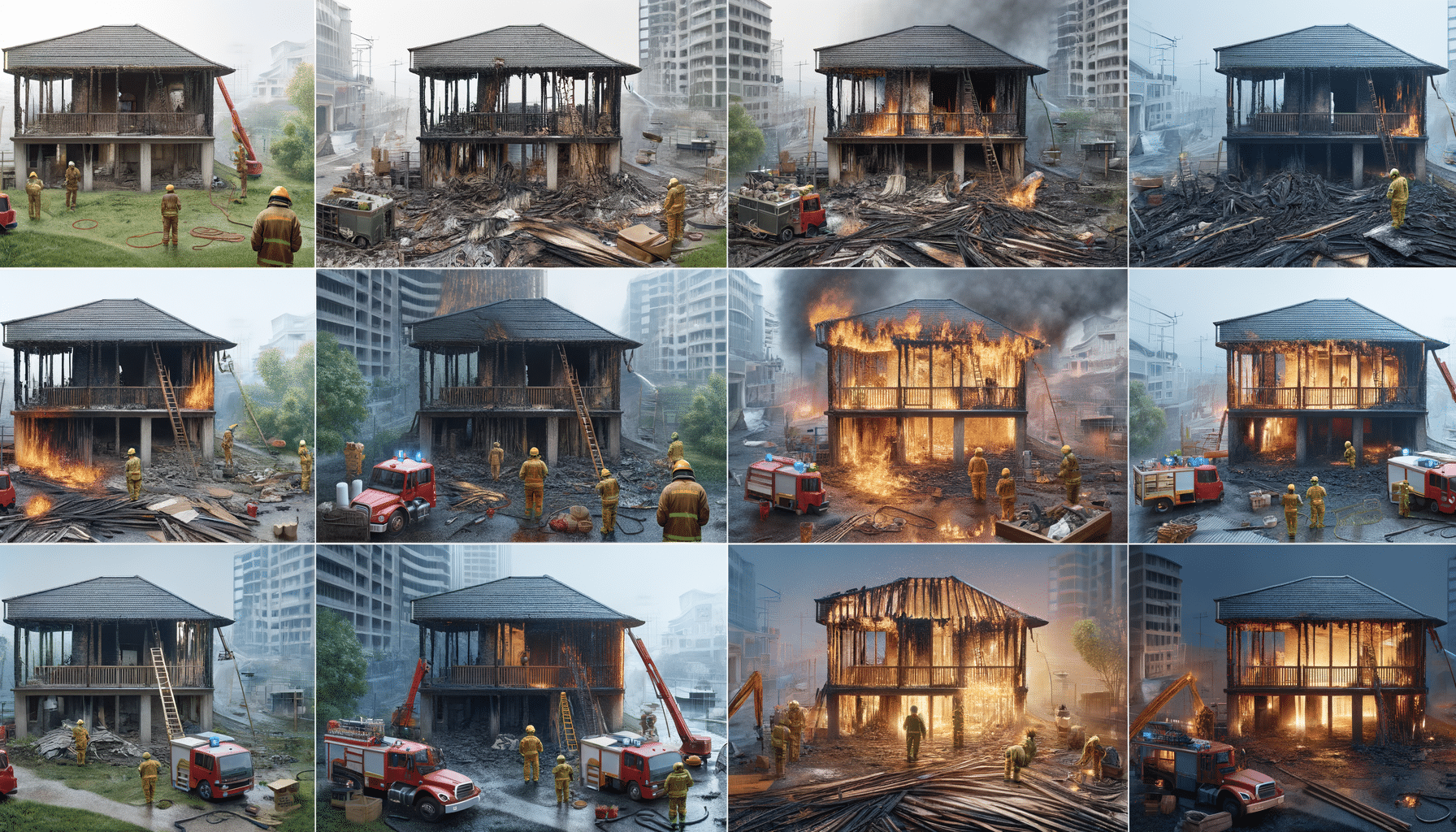
Understanding Fire Damage and Restoration Services
Introduction to Fire Damage
Fire damage is a devastating event that can have far-reaching impacts on both the structural integrity of a building and the health of its occupants. The immediate effects of fire are often visible, with charred walls and burnt belongings, but the hidden dangers such as smoke damage and weakened structures can pose significant risks long after the flames have been extinguished. Understanding the complexities of fire damage is essential for effective restoration and safety.
Fires can occur for a variety of reasons, including electrical faults, kitchen mishaps, or natural disasters. Regardless of the cause, the aftermath requires a comprehensive approach to ensure that the building is safe for habitation. This includes assessing the extent of the damage, identifying potential hazards, and implementing a restoration plan that addresses both immediate and long-term needs.
The Impact of Fire Damage on Structures
When a fire engulfs a structure, the heat can cause significant damage to the building’s framework. This includes the weakening of beams, walls, and floors, which can compromise the overall stability of the structure. Additionally, the intense heat can cause materials to expand and contract, leading to cracks and other structural issues.
Beyond the physical damage, fires can also result in secondary issues such as water damage from firefighting efforts. The combination of fire and water can create a hazardous environment that requires specialized knowledge to address. Restoration professionals must be equipped to handle these challenges, ensuring that all aspects of the damage are thoroughly assessed and repaired.
Key considerations for structural restoration include:
- Evaluating the integrity of load-bearing elements
- Repairing or replacing damaged materials
- Addressing potential chemical contamination from burned materials
Environmental and Health Concerns
Fire damage is not limited to physical structures; it also poses significant environmental and health concerns. The smoke and soot produced by a fire can infiltrate ventilation systems, spreading harmful particles throughout a building. These particles can cause respiratory issues, exacerbate allergies, and contribute to long-term health problems.
Moreover, the chemicals released during a fire, such as carbon monoxide and volatile organic compounds (VOCs), can linger in the air and surfaces, creating an unsafe environment for occupants. Professional restoration services are crucial in addressing these hazards, using specialized equipment and techniques to purify the air and remove contaminants.
Health and safety measures in fire restoration include:
- Air quality testing and purification
- Removal of soot and smoke residues
- Decontamination of affected areas
Fire Restoration Services and Techniques
Fire restoration is a multi-step process that involves a range of services and techniques to return a property to its pre-fire condition. This begins with an initial assessment to determine the extent of the damage and the necessary steps for restoration. Professionals then develop a tailored plan that addresses the specific needs of the property.
Key techniques used in fire restoration include:
- Structural drying and dehumidification to prevent mold growth
- Smoke and odor removal using air scrubbers and ozone treatments
- Cleaning and sanitizing of salvageable items
With the right approach, fire restoration services can effectively mitigate damage, ensuring that properties are safe and habitable once more.
Conclusion: The Importance of Professional Fire Restoration
Fire damage presents a complex challenge that requires a comprehensive and informed approach to restoration. The combination of structural, environmental, and health concerns makes it essential to engage professional services that have the expertise and equipment to address all aspects of the damage.
By understanding the intricacies of fire damage and the restoration process, property owners can better navigate the aftermath of a fire, ensuring that their homes or businesses are restored to a safe and functional state. Professional fire restoration not only addresses immediate concerns but also helps prevent long-term issues, safeguarding the health and safety of occupants.


